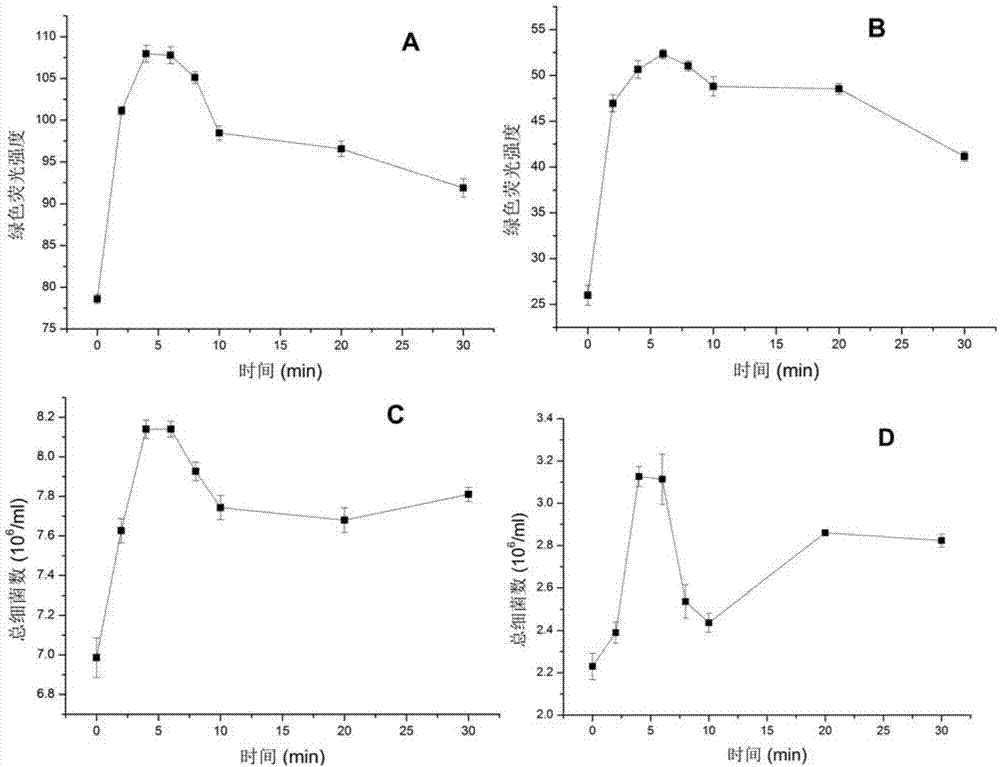Method for measuring sizes of heterotrophic bacteria in shallow lake based on flow cytometry
A technology of flow cytometry and heterotrophic bacteria is applied in the field of rapid detection of the size of heterotrophic bacteria in large shallow lakes, and can solve the problems of flow cytometry interference, increased difficulty of flow cytometry analysis, and increased background noise. , to achieve the effect of short time, fast test speed and high accuracy
- Summary
- Abstract
- Description
- Claims
- Application Information
AI Technical Summary
Problems solved by technology
Method used
Image
Examples
Embodiment 1
[0036] Example 1 Verification of the size of fluorescent microspheres
[0037] The flow cytometer is regulated and corrected with standard fluorescent beads, and the liquid flow system and optical system are adjusted so that the coefficient of variation of fluorescent signals detected by the standard fluorescent beads in each detector channel is lower than 3%.
[0038] Select 0.5um, 0.8um, 1um, 3um, 6um standard green microspheres (Polysciences, USA) with various particle sizes, and use flow cytometry to test separately, collect forward scattered light (FSC, reflecting cell size), side Scattered light (SSC, reflecting the internal structure of the cell), green fluorescence signal of FL1 channel. The flow rate was controlled within 1,000 cells per second, and a total of 20,000 cells were collected. By repeatedly measuring their FSC values, the relationship between cell particle size and FSC is established, the standard curve of bacterial size is made, the regression analysis e...
Embodiment 2
[0040] Example 2 Bacterial size in large shallow water eutrophication lake Taihu Lake
[0041] The present embodiment measures the size of bacteria in the large-scale shallow water eutrophic lake Taihu Lake, which specifically includes the following steps:
[0042] (1) In February 2014, a water collector was used to collect surface water samples from each point in Taihu Lake, a total of 32 samples (such as image 3 ), collected into a pre-sterilized EP tube, added formaldehyde as a fixative with a final volume concentration of 1%, and transported back to the laboratory in a refrigerated incubator.
[0043] (2) Take at least 500 μl of sample, dilute it with sterilized water 1:10 and mix well. Take 5ml of the sample and pass it through an ultrasonic cleaner (power 25W) for 5 minutes to break up the heterotrophic bacteria that are agglomerated and attached to other organisms. Pass through a 300-mesh sieve to remove large particles of impurities.
[0044] (3) Aspirate 1 ml of t...
PUM
 Login to View More
Login to View More Abstract
Description
Claims
Application Information
 Login to View More
Login to View More - R&D
- Intellectual Property
- Life Sciences
- Materials
- Tech Scout
- Unparalleled Data Quality
- Higher Quality Content
- 60% Fewer Hallucinations
Browse by: Latest US Patents, China's latest patents, Technical Efficacy Thesaurus, Application Domain, Technology Topic, Popular Technical Reports.
© 2025 PatSnap. All rights reserved.Legal|Privacy policy|Modern Slavery Act Transparency Statement|Sitemap|About US| Contact US: help@patsnap.com



